My
List |
Addition Date
|
Target
|
Mission
|
Instrument
|
Size
|

|
2014-04-25 |
|
Wide-field Infrared Survey Explorer (WISE)
|
|
3000x1688x3 |
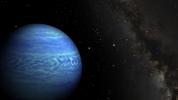
|
-
PIA18001:
-
Cold and Close Celestial Orb (Artist's Concept)
Full Resolution:
TIFF
(15.2 MB)
JPEG
(215.4 kB)
|

|
2014-04-17 |
|
Kepler
|
|
4534x2550x3 |

|
-
PIA18000:
-
Kepler-186 and the Solar System
Full Resolution:
TIFF
(34.71 MB)
JPEG
(564.3 kB)
|

|
2014-04-17 |
|
Kepler
|
|
4534x2550x3 |

|
-
PIA17999:
-
Kepler-186f, the First Earth-size Planet in the Habitable Zone (Artist's Concept)
Full Resolution:
TIFF
(34.71 MB)
JPEG
(691.4 kB)
|

|
2014-04-14 |
|
Hubble Space Telescope
|
Hubble Space Telescope
|
1280x824x3 |

|
-
PIA18168:
-
The Tadpole and the Wriggler
Full Resolution:
TIFF
(3.165 MB)
JPEG
(102.6 kB)
|

|
2014-04-10 |
Exoplanet
|
|
|
4200x2363x3 |
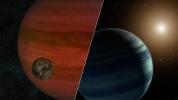
|
-
PIA17998:
-
Moon or Planet? The 'Exomoon Hunt' Continues (Artist's Concept)
Full Resolution:
TIFF
(29.79 MB)
JPEG
(934.1 kB)
|

|
2014-04-02 |
Helix Nebula
|
Hubble Space Telescope
|
Hubble Space Telescope
|
16000x16000x3 |
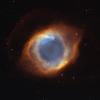
|
-
PIA18164:
-
Iridescent Glory of Nearby Helix Nebula
Full Resolution:
TIFF
(768.1 MB)
JPEG
(27.72 MB)
|

|
2014-03-26 |
|
Spitzer Space Telescope
|
Spitzer Space Telescope
|
930x886x3 |
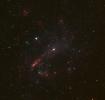
|
-
PIA17997:
-
Bulgeless Galaxy Hides Black Hole
Full Resolution:
TIFF
(2.473 MB)
JPEG
(70.62 kB)
|

|
2014-03-20 |
|
Spitzer Space Telescope
|
IRAC
|
14400x8700x3 |

|
-
PIA17996:
-
GLIMPSE the Galaxy All the Way Around
Full Resolution:
TIFF
(375.9 MB)
JPEG
(9.296 MB)
|

|
2014-03-07 |
|
Wide-field Infrared Survey Explorer (WISE)
|
Gemini Observatory
WISE Telescope
|
2233x2236x3 |
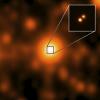
|
-
PIA17992:
-
Brown Dwarfs in our 'Backyard'
Full Resolution:
TIFF
(14.99 MB)
JPEG
(190.2 kB)
|

|
2014-03-07 |
|
Wide-field Infrared Survey Explorer (WISE)
|
|
1200x1202x3 |
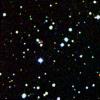
|
-
PIA17991:
-
A New Solar Neighbor
Full Resolution:
TIFF
(4.329 MB)
JPEG
(136 kB)
|

|
2014-03-06 |
|
Spitzer Space Telescope
|
|
3840x2160x3 |

|
-
PIA17849:
-
Loops of Gas and Dust Rise from Planetary Disks (Artist Concept)
Full Resolution:
TIFF
(24.89 MB)
JPEG
(461.2 kB)
|

|
2014-02-27 |
|
Kepler
|
|
1200x860x3 |

|
-
PIA17848:
-
Star System Bonanza (Illustration)
Full Resolution:
TIFF
(3.097 MB)
JPEG
(156.3 kB)
|

|
2014-02-26 |
|
Spitzer Space Telescope
|
IRAC
|
3900x2400x3 |
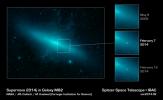
|
-
PIA17847:
-
Seeing Through a Veil of Dust
Full Resolution:
TIFF
(28.09 MB)
JPEG
(442.5 kB)
|

|
2014-02-20 |
|
Spitzer Space Telescope
|
IRAC
|
2470x1880x3 |

|
-
PIA17843:
-
Speedster Star Shocks the Galaxy
Full Resolution:
TIFF
(13.94 MB)
JPEG
(512.3 kB)
|

|
2014-02-19 |
|
Chandra X-ray Observatory
NuSTAR
|
Chandra X-ray Telescope
NuSTAR
|
3000x2400x3 |

|
-
PIA17846:
-
NuSTAR Data Point to Sloshing Supernovas
Full Resolution:
TIFF
(21.61 MB)
JPEG
(378 kB)
|

|
2014-02-19 |
|
NuSTAR
|
|
586x434x3 |
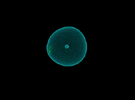
|
-
PIA17845:
-
Sloshing Star Goes Supernova

Full Resolution:
TIFF
(763.5 kB)
JPEG
(9.537 kB)
|

|
2014-02-19 |
|
Chandra X-ray Observatory
NuSTAR
|
Chandra X-ray Telescope
NuSTAR
|
3000x2000x3 |
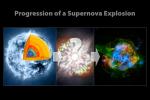
|
-
PIA17844:
-
Evolution of a Supernova
Full Resolution:
TIFF
(18.01 MB)
JPEG
(344.8 kB)
|

|
2014-02-19 |
|
Chandra X-ray Observatory
NuSTAR
|
Chandra X-ray Telescope
NuSTAR
|
2048x1024x3 |
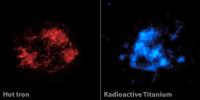
|
-
PIA17842:
-
The Case of Missing Iron in Cassiopeia A
Full Resolution:
TIFF
(6.294 MB)
JPEG
(87.83 kB)
|

|
2014-02-19 |
|
Chandra X-ray Observatory
NuSTAR
|
Chandra X-ray Telescope
NuSTAR
|
1024x1024x3 |
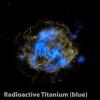
|
-
PIA17841:
-
Radioactive Core of a Dead Star
Full Resolution:
TIFF
(3.147 MB)
JPEG
(62.44 kB)
|

|
2014-02-19 |
|
NuSTAR
|
NuSTAR
|
4000x2250x3 |
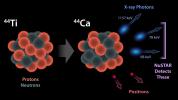
|
-
PIA17840:
-
The Creation of Titanium in Stars
Full Resolution:
TIFF
(27.01 MB)
JPEG
(330.3 kB)
|

|
2014-02-19 |
|
Chandra X-ray Observatory
NuSTAR
|
Chandra X-ray Telescope
NuSTAR
|
3072x1024x3 |
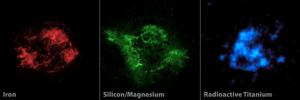
|
-
PIA17839:
-
Adding a New "Color" to Palate of Cassiopeia A Images
Full Resolution:
TIFF
(9.442 MB)
JPEG
(157.2 kB)
|

|
2014-02-19 |
|
Chandra X-ray Observatory
NuSTAR
|
Chandra X-ray Telescope
NuSTAR
|
3000x3000x3 |
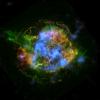
|
-
PIA17838:
-
Untangling the Remains of Cassiopeia A
Full Resolution:
TIFF
(27.01 MB)
JPEG
(350.8 kB)
|

|
2014-02-11 |
Sol (our sun)
|
SDO
|
Atmosphere Imaging Assembly
|
1024x1024x3 |
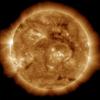
|
-
PIA17669:
-
Pulses from the Sun
Full Resolution:
TIFF
(3.147 MB)
JPEG
(71.34 kB)
|

|
2014-02-07 |
|
Hubble Space Telescope
Spitzer Space Telescope
|
|
2416x1080x3 |
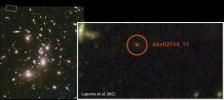
|
-
PIA17837:
-
Pushing the Limits of the Observable Universe
Full Resolution:
TIFF
(7.831 MB)
JPEG
(227.1 kB)
|

|
2014-02-04 |
|
Kepler
|
|
3000x2400x3 |
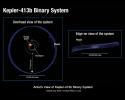
|
-
PIA17836:
-
Wobbly Planet Orbital Schematic (Illustration)
Full Resolution:
TIFF
(21.61 MB)
JPEG
(345.3 kB)
|

|
2014-01-30 |
|
Hubble Space Telescope
|
WFPC2
|
1005x1005x3 |
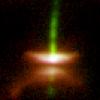
|
-
PIA17835:
-
Dark Disks Around Young Stars
Full Resolution:
TIFF
(3.031 MB)
JPEG
(56.86 kB)
|

|
2014-01-29 |
|
Wide-field Infrared Survey Explorer (WISE)
|
WISE Telescope
|
4095x4095x3 |
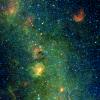
|
-
PIA17834:
-
Storm of Stars in the Trifid Nebula
Full Resolution:
TIFF
(50.32 MB)
JPEG
(2.289 MB)
|

|
2014-01-28 |
|
NEOWISE
|
NEOWISE Telescope
|
660x308x3 |
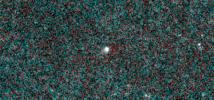
|
-
PIA17833:
-
NEOWISE Spies Comet C/2013 A1 Siding Spring
Full Resolution:
TIFF
(610.3 kB)
JPEG
(65.2 kB)
|

|
2014-01-09 |
|
NuSTAR
|
NuSTAR
|
3300x2800x3 |

|
-
PIA17567:
-
Different Flavors of Black Holes
Full Resolution:
TIFF
(27.73 MB)
JPEG
(545.3 kB)
|

|
2014-01-09 |
|
NuSTAR
|
NuSTAR
|
2500x2500x3 |
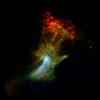
|
-
PIA17566:
-
High-Energy X-ray View of 'Hand of God'
Full Resolution:
TIFF
(18.76 MB)
JPEG
(172.9 kB)
|

|
2014-01-07 |
|
Hubble Space Telescope
|
Hubble Space Telescope
|
1148x1280x3 |

|
-
PIA17569:
-
Hubble Frontier Field Abell 2744
Full Resolution:
TIFF
(4.41 MB)
JPEG
(105.4 kB)
|

|
2014-01-07 |
|
Hubble Space Telescope
|
Hubble Space Telescope
|
1280x983x3 |

|
-
PIA17568:
-
Distant Galaxies in Goods North
Full Resolution:
TIFF
(3.776 MB)
JPEG
(240.3 kB)
|

|
2014-01-06 |
|
Spitzer Space Telescope
|
|
1041x585x3 |
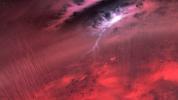
|
-
PIA21475:
-
Brown Dwarf Weather (Artist's Concept)
Full Resolution:
TIFF
(1.615 MB)
JPEG
(52.96 kB)
|

|
2013-12-19 |
|
NEOWISE
|
NEOWISE Telescope
|
2032x2032x3 |
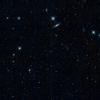
|
-
PIA17810:
-
NEOWISE Opens its Eyes
Full Resolution:
TIFF
(12.39 MB)
JPEG
(388 kB)
|

|
2013-12-18 |
|
Spitzer Space Telescope
|
IRAC
|
2000x2000x3 |
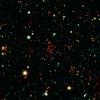
|
-
PIA17565:
-
Galactic Metropolis
Full Resolution:
TIFF
(12 MB)
JPEG
(435.8 kB)
|

|
2013-12-12 |
|
Wide-field Infrared Survey Explorer (WISE)
|
WISE Telescope
|
9334x7107x3 |
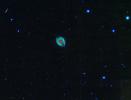
|
-
PIA17564:
-
March of Asteroids Across Dying Star
Full Resolution:
TIFF
(199.1 MB)
JPEG
(8.773 MB)
|

|
2013-12-12 |
|
Herschel Space Observatory
Hubble Space Telescope
|
PACS
WFPC2
|
3864x3864x3 |
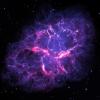
|
-
PIA17563:
-
Crab Nebula, as Seen by Herschel and Hubble
Full Resolution:
TIFF
(44.81 MB)
JPEG
(1.205 MB)
|

|
2013-12-03 |
|
Wide-field Infrared Survey Explorer (WISE)
|
|
1280x720x3 |

|
-
PIA17562:
-
Two Black Holes on Way to Becoming One (Artist's Concept)
Full Resolution:
TIFF
(2.766 MB)
JPEG
(108.1 kB)
|

|
2013-11-26 |
|
NuSTAR
|
NuSTAR
|
1400x1400x3 |
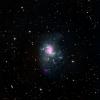
|
-
PIA17561:
-
Topsy Turvy Black Holes
Full Resolution:
TIFF
(5.882 MB)
JPEG
(137.5 kB)
|

|
2013-11-26 |
|
NuSTAR
|
NuSTAR
|
1600x1600x3 |
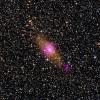
|
-
PIA17560:
-
Black Holes of the Circinus Galaxy
Full Resolution:
TIFF
(7.683 MB)
JPEG
(599.9 kB)
|

|
2013-11-26 |
|
Hubble Space Telescope
|
|
660x308x3 |
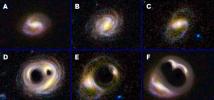
|
-
PIA17559:
-
Warped Galaxies Quiz
Full Resolution:
TIFF
(610.3 kB)
JPEG
(35.18 kB)
|

|
2013-11-21 |
|
Spitzer Space Telescope
Hubble Space Telescope
Subaru Telescope
|
IRAC
|
960x960x3 |

|
-
PIA17558:
-
Three-headed Galactic Blob
Full Resolution:
TIFF
(2.766 MB)
JPEG
(33.67 kB)
|

|
2013-11-14 |
|
Wide-field Infrared Survey Explorer (WISE)
|
WISE Telescope
|
2400x1700x3 |
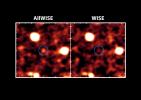
|
-
PIA17557:
-
AllWISE Brings Galaxies Out of Hiding
Full Resolution:
TIFF
(12.24 MB)
JPEG
(206.5 kB)
|

|
2013-11-14 |
|
Spitzer Space Telescope
Wide-field Infrared Survey Explorer (WISE)
|
Very Large Array (VLA)
|
2030x1200x3 |

|
-
PIA17556:
-
Two Galaxies Masquerading as One
Full Resolution:
TIFF
(7.311 MB)
JPEG
(99.06 kB)
|

|
2013-11-11 |
|
Spitzer Space Telescope
|
ALMA
IRAC
|
1500x1500x3 |
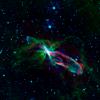
|
-
PIA17555:
-
Bubbly Newborn Star
Full Resolution:
TIFF
(6.753 MB)
JPEG
(150.4 kB)
|

|
2013-10-31 |
|
Galaxy Evolution Explorer (GALEX)
Wide-field Infrared Survey Explorer (WISE)
|
GALEX Telescope
WISE Telescope
|
1302x818x3 |
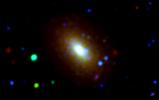
|
-
PIA17554:
-
Galaxies Grow from Inside Out
Full Resolution:
TIFF
(3.196 MB)
JPEG
(33.78 kB)
|

|
2013-10-30 |
|
Wide-field Infrared Survey Explorer (WISE)
|
WISE Telescope
|
9163x9163x3 |
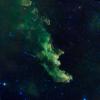
|
-
PIA17553:
-
'Witch Head' Brews Baby Stars
Full Resolution:
TIFF
(252 MB)
JPEG
(7.886 MB)
|

|
2013-10-28 |
|
Spitzer Space Telescope
|
IRAC
|
3600x2023x3 |
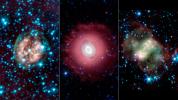
|
-
PIA17552:
-
Death Beckons Three Aging Stars
Full Resolution:
TIFF
(21.86 MB)
JPEG
(480 kB)
|

|
2013-10-25 |
|
Hubble Space Telescope
|
ALMA
Hubble Space Telescope
|
1762x1762x3 |
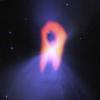
|
-
PIA17551:
-
Ghostly 'Boomerang'
Full Resolution:
TIFF
(9.318 MB)
JPEG
(384.9 kB)
|

|
2013-10-25 |
|
Kepler
|
|
5333x3000x3 |
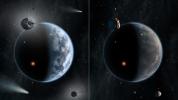
|
-
PIA17550:
-
A Tale of Two Worlds: Silicate Versus Carbon Planets (Artist Concept)
Full Resolution:
TIFF
(48.02 MB)
JPEG
(793.5 kB)
|

|
2013-09-30 |
|
Kepler
Spitzer Space Telescope
|
Kepler Telescope
Spitzer Space Telescope
|
3840x2160x3 |
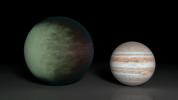
|
-
PIA17445:
-
Partially Cloudy Skies on Kepler-7b (Artist Concept)
Full Resolution:
TIFF
(24.89 MB)
JPEG
(243 kB)
|

|
2013-09-12 |
Sol (our sun)
|
Voyager
|
|
1280x720x3 |
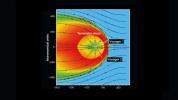
|
-
PIA17463:
-
Heliosphere Traveling Through Interstellar Space
Full Resolution:
TIFF
(2.766 MB)
JPEG
(72.59 kB)
|

|
2013-09-12 |
Sol (our sun)
|
Voyager
|
|
8192x4610x3 |

|
-
PIA17462:
-
Voyager 1 Entering Interstellar Space (Artist Concept)
Full Resolution:
TIFF
(113.3 MB)
JPEG
(938.1 kB)
|

|
2013-09-12 |
Sol (our sun)
|
Voyager
|
Oschin Schmidt Telescope
|
891x893x1 |
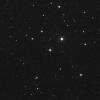
|
-
PIA17461:
-
Heading toward Gliese 445
Full Resolution:
TIFF
(796.7 kB)
JPEG
(105.7 kB)
|

|
2013-09-12 |
Sol (our sun)
|
Voyager
|
|
1280x720x3 |
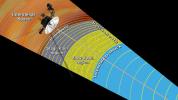
|
-
PIA17460:
-
Moving into Interstellar Space (Artist Concept)
Full Resolution:
TIFF
(2.766 MB)
JPEG
(120.1 kB)
|

|
2013-09-12 |
Sol (our sun)
|
Voyager
|
|
1280x720x3 |
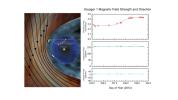
|
-
PIA17442:
-
Mystery of the Interstellar Magnetic Field (Artist's Concept)
Full Resolution:
TIFF
(2.766 MB)
JPEG
(78.79 kB)
|

|
2013-09-12 |
Sol (our sun)
|
Voyager
|
|
1280x720x3 |
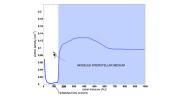
|
-
PIA17441:
-
Observed Change in Density Shows Voyager is in Interstellar Space
Full Resolution:
TIFF
(2.766 MB)
JPEG
(44.37 kB)
|

|
2013-09-12 |
Sol (our sun)
|
Voyager
|
|
1280x720x3 |

|
-
PIA17049:
-
Voyager in Space (Artist Concept)
Full Resolution:
TIFF
(2.766 MB)
JPEG
(35.7 kB)
|

|
2013-09-12 |
Sol (our sun)
|
Voyager
|
|
1280x720x3 |
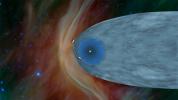
|
-
PIA17048:
-
One Voyager Out, One Voyager In (Artist Concept)
Full Resolution:
TIFF
(2.766 MB)
JPEG
(65.1 kB)
|

|
2013-09-12 |
Sol (our sun)
|
Voyager
|
Very Long Baseline Array
|
512x512x3 |

|
-
PIA17047:
-
Voyager Signal Spotted By Earth Radio Telescopes
Full Resolution:
TIFF
(264.2 kB)
JPEG
(4.896 kB)
|

|
2013-09-12 |
Sol (our sun)
|
Voyager
|
|
5432x3025x3 |
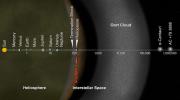
|
-
PIA17046:
-
Voyager Goes Interstellar (Artist Concept)
Full Resolution:
TIFF
(49.32 MB)
JPEG
(3.534 MB)
|

|
2013-09-12 |
Sol (our sun)
|
Voyager
|
Plasma Wave Instrument
|
1280x720x3 |
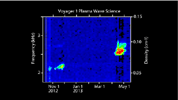
|
-
PIA17045:
-
Voyager Captures Sounds of Interstellar Space

Full Resolution:
TIFF
(2.766 MB)
JPEG
(56.6 kB)
|

|
2013-09-05 |
|
Spitzer Space Telescope
|
Spitzer Space Telescope
|
3200x1800x3 |
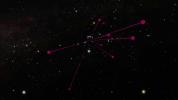
|
-
PIA17259:
-
Brown Dwarf Backyardigans
Full Resolution:
TIFF
(17.29 MB)
JPEG
(245.3 kB)
|

|
2013-09-05 |
|
Spitzer Space Telescope
|
|
3840x2160x3 |

|
-
PIA17258:
-
Free-floating Failed Star (Artist Concept)
Full Resolution:
TIFF
(24.89 MB)
JPEG
(845.6 kB)
|

|
2013-09-05 |
|
NuSTAR
|
NuSTAR
|
3200x1800x3 |
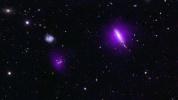
|
-
PIA17440:
-
Black Holes Shine for NuSTAR
Full Resolution:
TIFF
(17.29 MB)
JPEG
(718.2 kB)
|

|
2013-08-23 |
|
Spitzer Space Telescope
|
IRAC
|
3200x2700x3 |
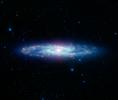
|
-
PIA17256:
-
The Barred Sculptor Galaxy
Full Resolution:
TIFF
(25.93 MB)
JPEG
(436.8 kB)
|

|
2013-08-23 |
|
Spitzer Space Telescope
|
IRAC
|
6400x6400x3 |
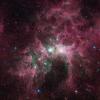
|
-
PIA17257:
-
The Tortured Clouds of Eta Carinae
Full Resolution:
TIFF
(122.9 MB)
JPEG
(5.541 MB)
|

|
2013-08-01 |
|
Spitzer Space Telescope
Wide-field Infrared Survey Explorer (WISE)
|
IRAC
|
2400x1200x3 |

|
-
PIA17253:
-
Monster in the Middle: Brightest Cluster Galaxy
Full Resolution:
TIFF
(8.643 MB)
JPEG
(226 kB)
|

|
2013-07-31 |
|
Spitzer Space Telescope
|
|
3840x2160x3 |
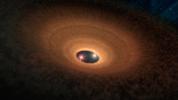
|
-
PIA17252:
-
Dusty Hula Hoop Rings 'Blinking' Stellar Duo (Illustration)
Full Resolution:
TIFF
(24.89 MB)
JPEG
(497.5 kB)
|

|
2013-07-17 |
|
Kepler
|
|
4268x2400x3 |
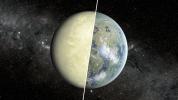
|
-
PIA17250:
-
Toxic Wasteland or Lush Paradise? (Artist Concept)
Full Resolution:
TIFF
(30.75 MB)
JPEG
(1.485 MB)
|

|
2013-06-28 |
|
Galaxy Evolution Explorer (GALEX)
|
GALEX Telescope
|
1650x1650x3 |
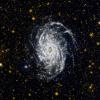
|
-
PIA17247:
-
Big Brother to the Milky Way
Full Resolution:
TIFF
(8.171 MB)
JPEG
(473.8 kB)
|

|
2013-06-28 |
|
Galaxy Evolution Explorer (GALEX)
|
GALEX Telescope
|
1500x1500x3 |
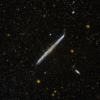
|
-
PIA17246:
-
Galaxy's Pencil-Thin Profile
Full Resolution:
TIFF
(6.753 MB)
JPEG
(377.7 kB)
|

|
2013-06-28 |
|
Galaxy Evolution Explorer (GALEX)
|
GALEX Telescope
|
1500x1500x3 |

|
-
PIA17245:
-
Ultraviolet Ring of Stars
Full Resolution:
TIFF
(6.753 MB)
JPEG
(390.5 kB)
|

|
2013-06-27 |
Sol (our sun)
|
Voyager
|
|
1280x730x3 |
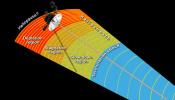
|
-
PIA17034:
-
Transitional Regions at the Heliosphere's Outer Limits
Full Resolution:
TIFF
(2.804 MB)
JPEG
(110 kB)
|

|
2013-06-27 |
Sol (our sun)
|
Voyager
|
|
1385x1103x3 |
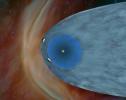
|
-
PIA17033:
-
Voyagers in the Heliosheath (Cropped)
Full Resolution:
TIFF
(4.585 MB)
JPEG
(80.83 kB)
|

|
2013-06-11 |
|
Herschel Space Observatory
|
|
4000x2250x3 |

|
-
PIA17243:
-
Mapping Invisible Pools of Gas in Our Galaxy (Illustration)
Full Resolution:
TIFF
(27.01 MB)
JPEG
(379.7 kB)
|

|
2013-06-11 |
|
NuSTAR
|
NuSTAR
|
6620x3724x3 |
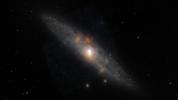
|
-
PIA17244:
-
Sculptor Galaxy Shines with X-rays
Full Resolution:
TIFF
(73.99 MB)
JPEG
(547.1 kB)
|

|
2013-06-05 |
|
Spitzer Space Telescope
|
IRAC
|
6600x6600x3 |
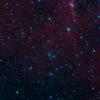
|
-
PIA17241:
-
Galaxies in Hiding
Full Resolution:
TIFF
(130.7 MB)
JPEG
(6.917 MB)
|

|
2013-06-05 |
|
Spitzer Space Telescope
Wide-field Infrared Survey Explorer (WISE)
|
IRAC
WISE Telescope
|
9000x7000x3 |
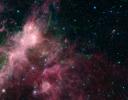
|
-
PIA17019:
-
Life and Death Intermingled
Full Resolution:
TIFF
(189.1 MB)
JPEG
(10.27 MB)
|

|
2013-06-05 |
|
Spitzer Space Telescope
Wide-field Infrared Survey Explorer (WISE)
|
IRAC
WISE Telescope
|
3000x3000x3 |
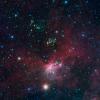
|
-
PIA17018:
-
Stars Shoot Jets in Cosmic Playground
Full Resolution:
TIFF
(27.01 MB)
JPEG
(1.76 MB)
|

|
2013-06-05 |
|
Spitzer Space Telescope
|
IRAC
|
3300x3300x3 |
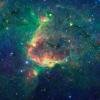
|
-
PIA17017:
-
Bubbles Within Bubbles
Full Resolution:
TIFF
(32.68 MB)
JPEG
(1.799 MB)
|

|
2013-05-29 |
|
Wide-field Infrared Survey Explorer (WISE)
|
WISE Telescope
|
4534x2550x3 |

|
-
PIA17016:
-
Asteroid Family's Shattered Past (Artist Concept)
Full Resolution:
TIFF
(34.71 MB)
JPEG
(696.8 kB)
|

|
2013-05-24 |
|
Spitzer Space Telescope
|
IRAC
|
960x960x3 |
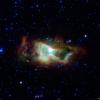
|
-
PIA17015:
-
Infrared Iris
Full Resolution:
TIFF
(2.766 MB)
JPEG
(58.18 kB)
|

|
2013-05-24 |
|
|
|
899x709x3 |
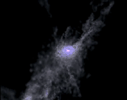
|
-
PIA17014:
-
Cosmic Swirly Straws Feed Galaxy

Full Resolution:
TIFF
(1.913 MB)
JPEG
(25.9 kB)
|

|
2013-05-22 |
|
Herschel Space Observatory
|
|
2400x1500x3 |
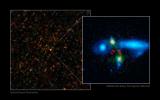
|
-
PIA17013:
-
The Making of a Giant Galaxy
Full Resolution:
TIFF
(10.8 MB)
JPEG
(211.3 kB)
|

|
2013-05-22 |
|
Herschel Space Observatory
|
|
1278x719x3 |
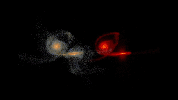
|
-
PIA17012:
-
Mega Galaxy Merger

Full Resolution:
TIFF
(2.758 MB)
JPEG
(43.5 kB)
|

|
2013-05-16 |
|
Spitzer Space Telescope
|
IRAC
|
2820x2820x3 |

|
-
PIA17011:
-
Galactic Wheels within Wheels
Full Resolution:
TIFF
(23.87 MB)
JPEG
(733.1 kB)
|

|
2013-05-09 |
|
|
Hale Telescope
|
448x438x1 |

|
-
PIA17010:
-
Planetary Family Portrait
Full Resolution:
TIFF
(196.6 kB)
JPEG
(23.06 kB)
|

|
2013-05-07 |
|
Herschel Space Observatory
|
|
4096x2048x3 |

|
-
PIA17009:
-
Hustle and Bustle at Center of Milky Way
Full Resolution:
TIFF
(25.17 MB)
JPEG
(500.7 kB)
|

|
2013-04-23 |
|
Hubble Space Telescope
Wide-field Infrared Survey Explorer (WISE)
|
WISE Telescope
|
4095x2842x3 |
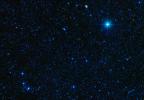
|
-
PIA17005:
-
Galaxy Packs Big Star-Making Punch
Full Resolution:
TIFF
(34.93 MB)
JPEG
(1.316 MB)
|

|
2013-04-19 |
|
Hubble Space Telescope
|
WFC3
|
2704x2826x3 |

|
-
PIA16008:
-
Hubble Sees a Horsehead of a Different Color
Full Resolution:
TIFF
(18.43 MB)
JPEG
(700.1 kB)
|

|
2013-04-18 |
|
Kepler
|
|
4268x2400x3 |

|
-
PIA17004:
-
Kepler-62e (Artist Concept)

Full Resolution:
TIFF
(30.75 MB)
JPEG
(1.774 MB)
|

|
2013-04-18 |
|
Kepler
|
|
4000x2251x3 |
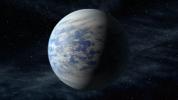
|
-
PIA17003:
-
Super-Venus (Artist Concept)
Full Resolution:
TIFF
(27.02 MB)
JPEG
(525.2 kB)
|

|
2013-04-18 |
|
Kepler
|
|
4268x2400x3 |
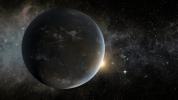
|
-
PIA17002:
-
Morning Star (Artist Concept)
Full Resolution:
TIFF
(30.75 MB)
JPEG
(1.245 MB)
|

|
2013-04-18 |
|
Kepler
|
|
4268x2400x3 |

|
-
PIA17001:
-
Kepler-62f, a Small Habitable Zone World (Artist Concept)
Full Resolution:
TIFF
(30.75 MB)
JPEG
(1.432 MB)
|

|
2013-04-18 |
|
Kepler
|
|
3400x2400x3 |

|
-
PIA17000:
-
Kepler-69 and the Solar System
Full Resolution:
TIFF
(24.49 MB)
JPEG
(346.2 kB)
|

|
2013-04-18 |
|
Kepler
|
|
3400x2400x3 |
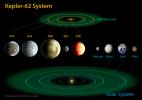
|
-
PIA16889:
-
Kepler-62 and the Solar System
Full Resolution:
TIFF
(24.49 MB)
JPEG
(379 kB)
|

|
2013-04-18 |
|
Kepler
|
|
6112x4680x3 |
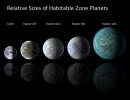
|
-
PIA16888:
-
Lining Kepler Habitable Zone Planets Up
Full Resolution:
TIFF
(85.85 MB)
JPEG
(1.055 MB)
|

|
2013-04-17 |
|
Herschel Space Observatory
|
|
1280x1280x3 |
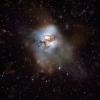
|
-
PIA16887:
-
Artist's Impression of Starburst Galaxy
Full Resolution:
TIFF
(4.917 MB)
JPEG
(211.9 kB)
|

|
2013-04-04 |
|
Kepler
|
|
3000x2400x3 |

|
-
PIA16886:
-
White Dwarfs: Small and Strong
Full Resolution:
TIFF
(21.61 MB)
JPEG
(404.9 kB)
|

 Planetary Data System
Planetary Data System





















































































































